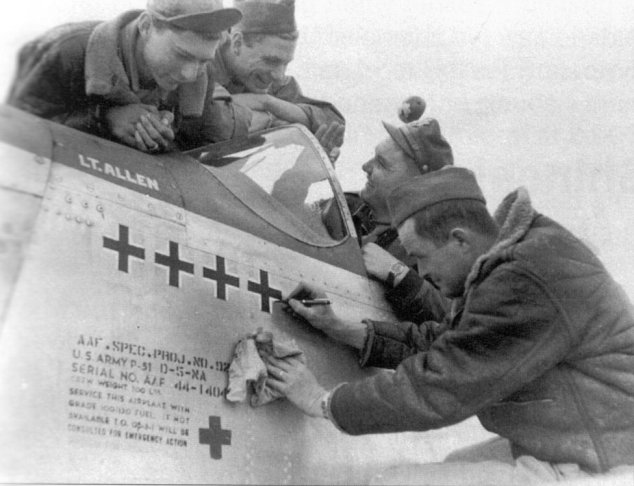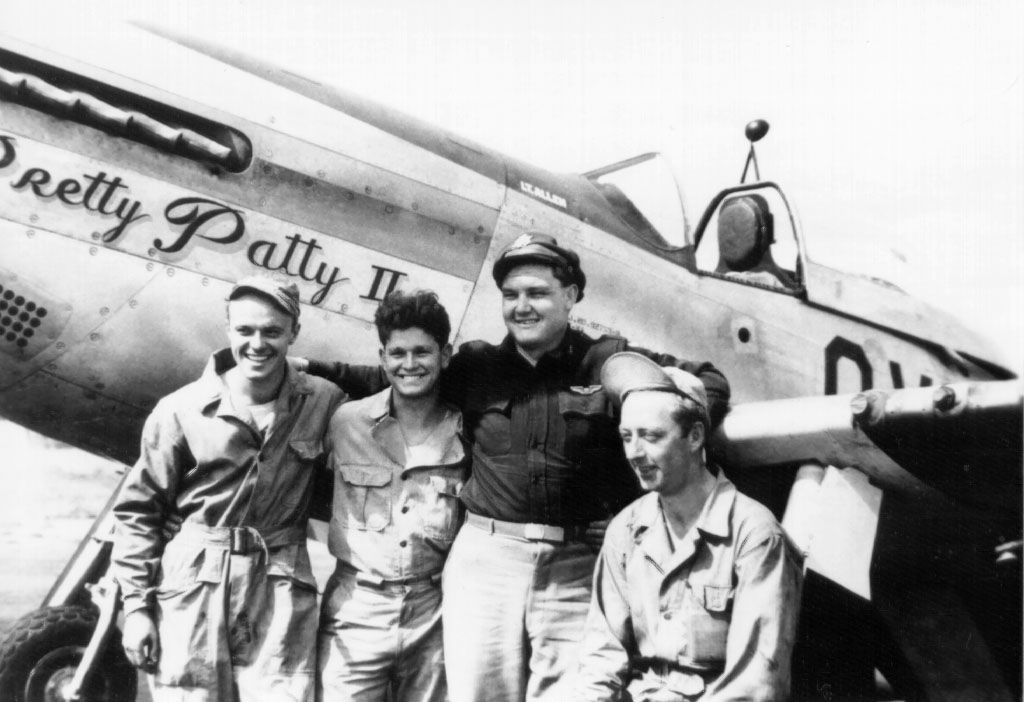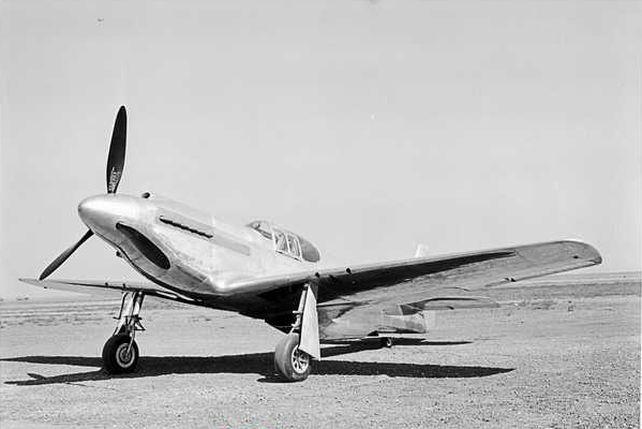
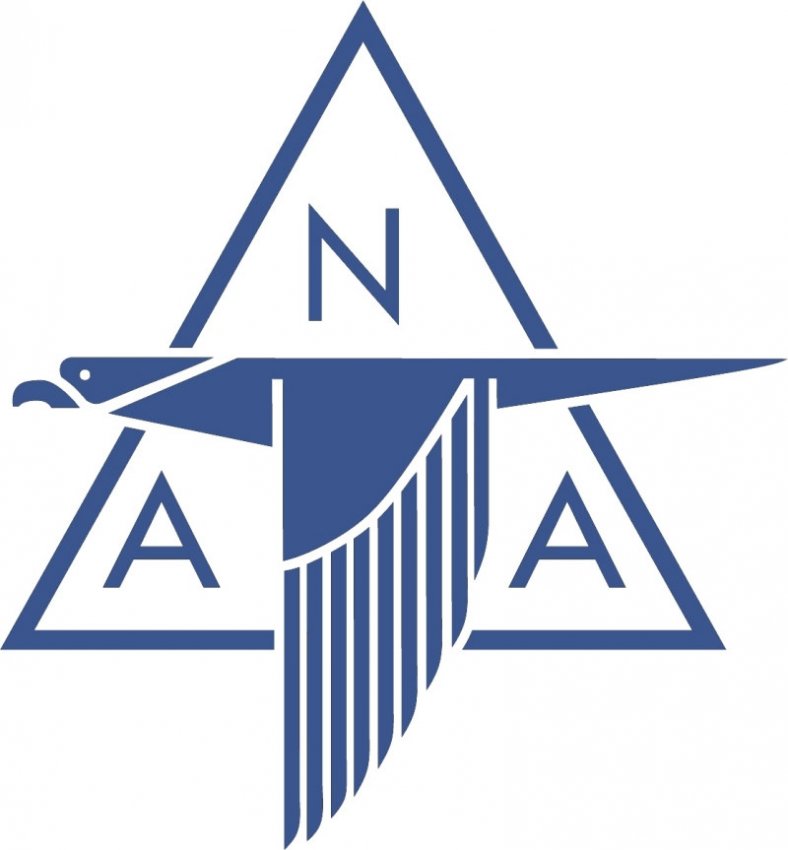 26 October 1940: At Mines Field, Los Angeles, California (now, Los Angeles International Airport), free lance test pilot Vance Breese took the prototype North American Aviation NA-73X, civil registration NX19998, on a five-minute first flight. Later in the day, Breese flew the NA-73X another ten minutes. He would make six more test flights between 26 October and 13 November, totaling approximately 3 hours, 30 minutes of flight time.
26 October 1940: At Mines Field, Los Angeles, California (now, Los Angeles International Airport), free lance test pilot Vance Breese took the prototype North American Aviation NA-73X, civil registration NX19998, on a five-minute first flight. Later in the day, Breese flew the NA-73X another ten minutes. He would make six more test flights between 26 October and 13 November, totaling approximately 3 hours, 30 minutes of flight time.
With Great Britain at war with Nazi Germany, the Royal Air Force was the primary defender of the island nation. Airplane manufacturers were turning out Hawker Hurricanes and Supermarine Spitfires as rapidly as possible, but they were barely keeping up with combat losses. England needed more fighters. They had taken over an order for Curtiss-Wright Hawk 81-A1 fighters which had been built for France, but which had not been shipped by the time France surrendered. The RAF called these fighters the Tomahawk Mark I (P-40 Warhawk in U.S. service).
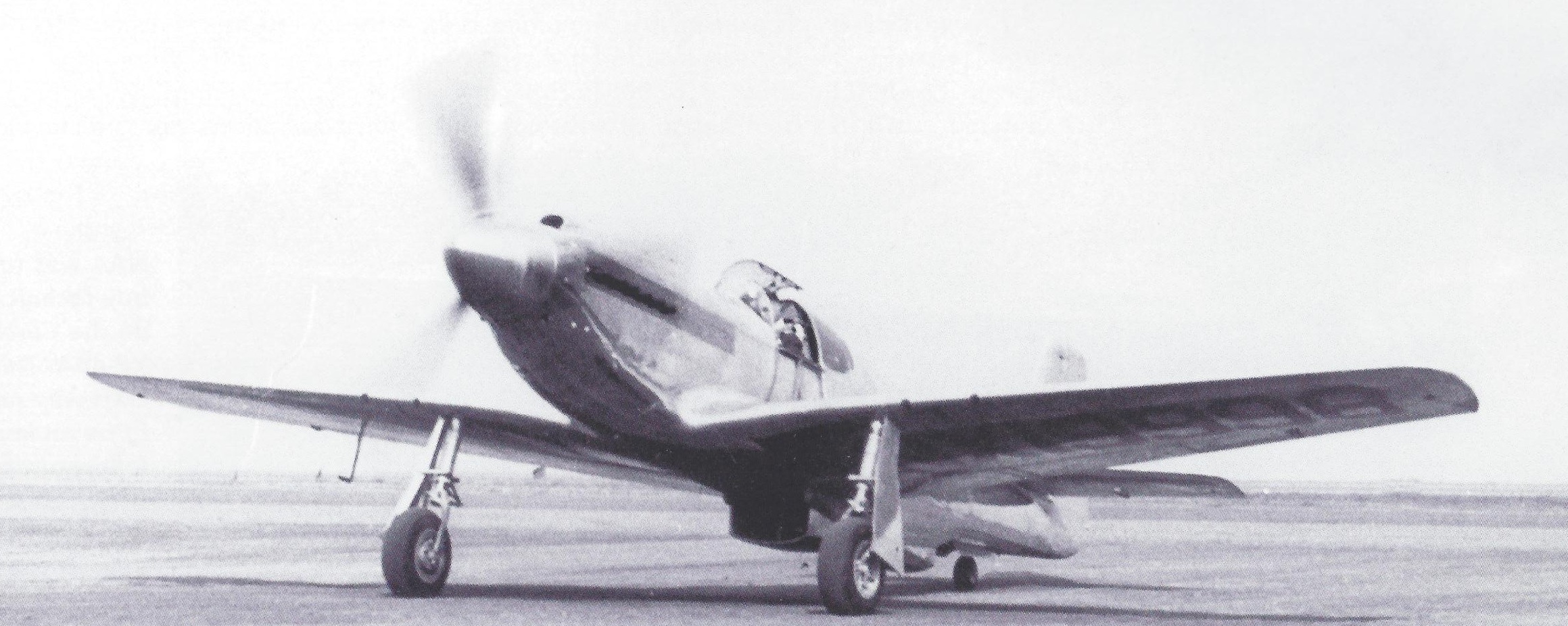
The British Purchasing Commission asked North American Aviation in Los Angeles, California, to build additional Tomahawks under license from Curtiss-Wright. North American countered with a proposal to design a completely new and superior fighter around the P-40’s Allison V-12 engine, and begin production in no more time than it would take to get a P-40 production line up and running. The Purchasing Commission agreed, and with a letter of understanding, North American began work on the NA-73X on 1 May 1940. They were to produce 320 fighters before 30 September 1941, approximately 50 per month, at a total price of $14,746,964.35.
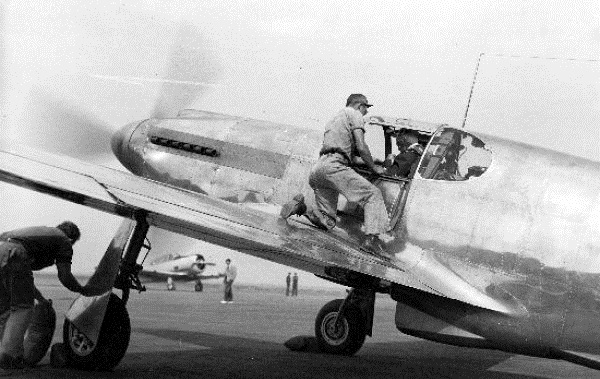
In a contract amendment dated 9 December 1940, the British Purchasing Commission directed that the NA-73 would be identified by the name, “Mustang.”
The prototype NA-73X, North American serial number 73-3097, was a single-seat, single-engine, low wing monoplane with retractable landing gear. It was primarily of metal construction, though the flight control surfaces were fabric covered. The airplane was designed for the maximum reduction in aerodynamic drag. The fuselage panels were precisely designed and very smooth. Flush riveting was used. The Mustang was the first airplane to use a laminar-flow wing. The coolant radiator with its intake and exhaust ducts was located behind and below the cockpit. As cooling air passed through the radiator, it was heated and expanded, so that as it exited, it actually produced some thrust.
The prototype was 32 feet, 2–5/8 inches (9.820 meters) long, with a wing span of 37 feet, 5/16 inch (11.286 meters). Empty weight of the NA-73X was 6,278 pounds (2,848 kilograms) and normal takeoff weight was 7,965 pounds (3,613 kilograms).
 The NA-73X was powered by a liquid-cooled, supercharged, 1,710.60-cubic-inch-displacement (28.032 liter) Allison Engineering Company V-1710-F3R (V-1710-39) single overhead cam 60° V-12 engine, with a compression ratio of 6.65:1 and a single-stage, single-speed supercharger. This was a right-hand tractor engine (the V-1710 was built in both right-hand and left-hand configurations) which drove a 10 foot, 6 inch (3.200 meter) diameter, three-bladed, Curtiss Electric constant-speed propeller through a 2.00:1 gear reduction.
The NA-73X was powered by a liquid-cooled, supercharged, 1,710.60-cubic-inch-displacement (28.032 liter) Allison Engineering Company V-1710-F3R (V-1710-39) single overhead cam 60° V-12 engine, with a compression ratio of 6.65:1 and a single-stage, single-speed supercharger. This was a right-hand tractor engine (the V-1710 was built in both right-hand and left-hand configurations) which drove a 10 foot, 6 inch (3.200 meter) diameter, three-bladed, Curtiss Electric constant-speed propeller through a 2.00:1 gear reduction.
The V-1710-39 had a Normal Power rating of 880 horsepower at 2,600 r.p.m. at Sea Level; Take Off Power rating of 1,150 horsepower at 3,000 r.p.m. at Sea Level, with 44.5 inches of manifold pressure (1.51 Bar), 5 minute limit; and a War Emergency Power rating of 1,490 horsepower at 3,000 r.p.m., with 56 inches of manifold pressure (1.90 Bar). The V-1710-F3R was 3 feet, ¾ inches (0.934 meters) high, 2 feet, 5-9/32 inches (0.744 meters) wide and 7 feet, 1-5/8 inches (2.175 meters) long. It had a dry weight of 1,310 pounds (594 kilograms).
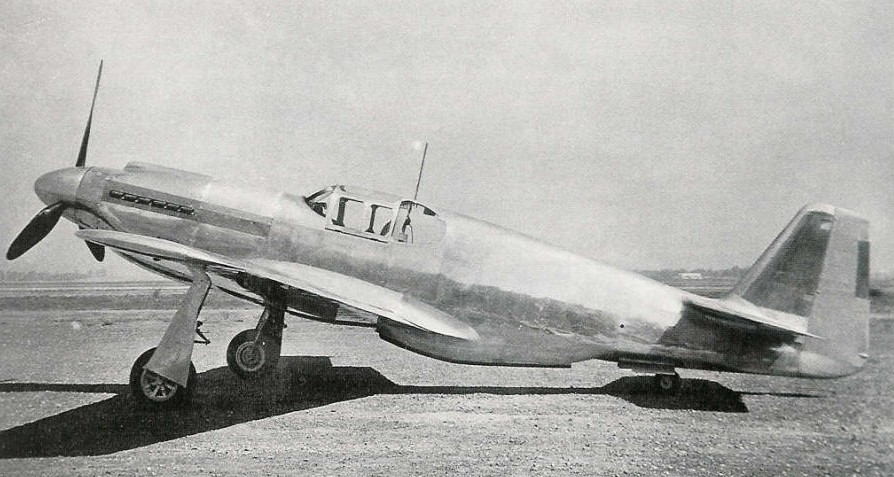
The NA-73X had a maximum speed of 382 miles per hour (615 kilometers per hour) at 13,700 feet (4,176 meters). The service ceiling was 32,000 feet (9,754 meters). The fuel capacity was 180 gallons (681.37 liters), giving the airplane a range of 750 miles (1,207 kilometers).
NX19998 was substantially damaged on 20 November 1940 when North American’s Chief Test Pilot, Paul B. Balfour, unable to make it back to Mines Field after the Allison engine failed, made a forced landing in a plowed field just west of Lincoln Boulevard. The prototype flipped over and landed upside down. Sources differ as to the cause of the engine failure, with some citing carburetor icing and others suggesting that Balfour failed to switch fuel tanks and the engine stopped running due to fuel starvation. Balfour was replaced by Robert C. Chilton and NA-73X was rebuilt.
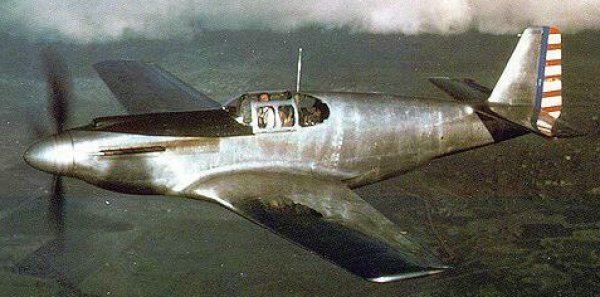
Bob Chilton said that “. . . NA-73X was a clean-flying aircraft with no bad vices. It was quite pleasant in the air and handled very similar to later production articles.”
There was only one NA-73X prototype. Its status is not known. Chilton recalled, “. . . NA-73X was just pushed aside after it had been retired from its last flight. It probably ended up on the company’s junk pile, but I do not recall seeing it there.” The prototype may have been given to a local industrial trade school.
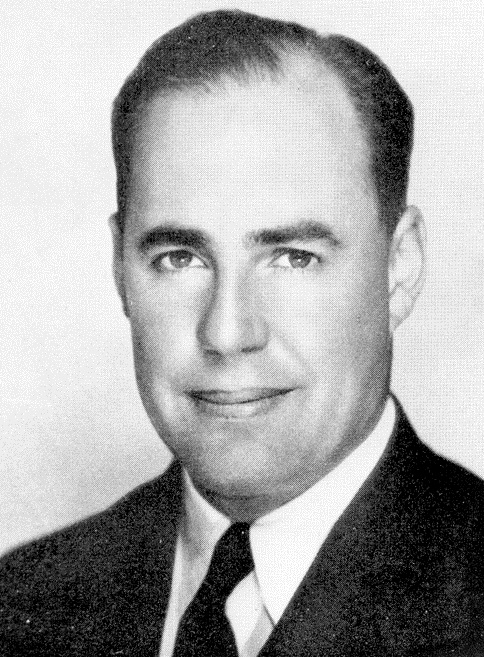
Vance Breese was born 20 April 1904 at Keystone, Washington, He was the first of five children of Lee Humbert Breese, a machinist, and Anna E. Dixon Breese.
Breese founded the Breese Aircraft Company in 1926, based at San Francisco, California, and then, as the Breese-Wilde Corporation, moved to Oregon. The company produced the Breese-Wilde Model 5, a single-engine light airplane. Two of these, Aloha and Pabco Flyer, flew in the notorious 1927 Dole Air Race from Oakland, California, to Honolulu, Hawaii. Pabco Flyer crashed on takeoff when its landing gear collapsed. Aloha finished in second place.
Breese formed a partnership with Gerard Vultee in 1932, with the Airplane Development Corporation at Detroit Michigan. They produced the Vultee V-1A, an 8 passenger light transport. He was also involved in an express mail company, Air Express Corporation.
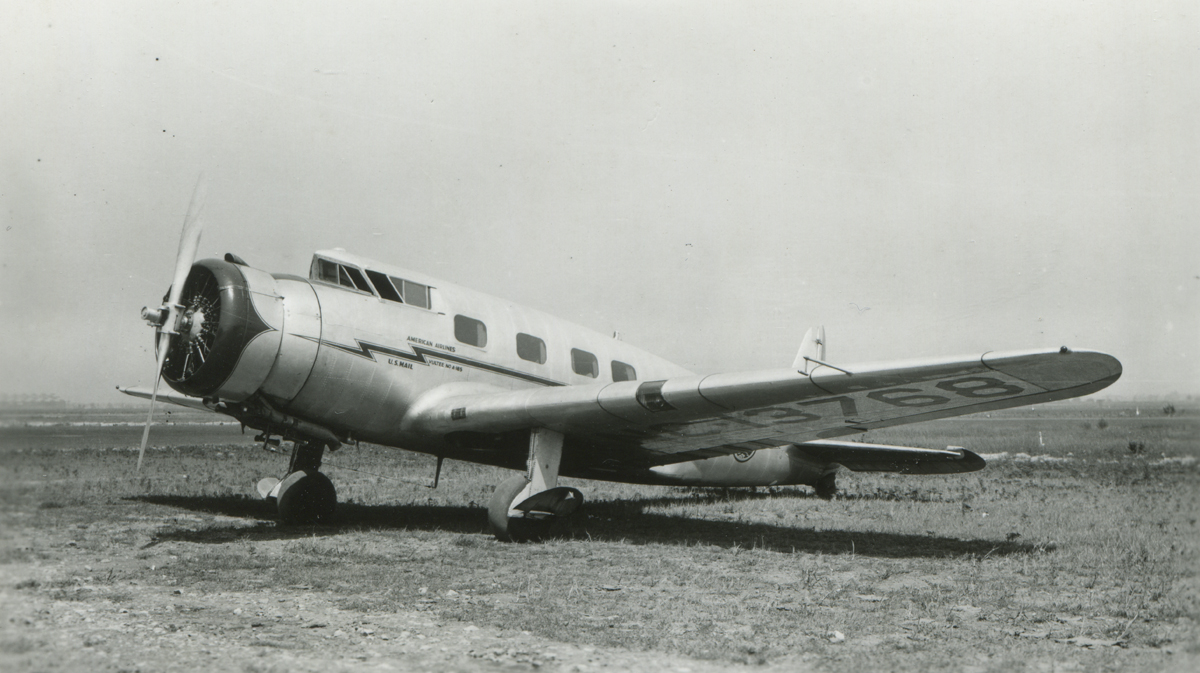
Vance Breese was well known as a test pilot, making a number of first flights and conducting flight tests for various airplane manufacturers. As a test pilot, Breese pioneered the use of recording equipment during flight testing. He used a Dictaphone to record his notes, and a cine camera to film the instruments during the flight.
Breese was married three times. He first married Miss Kathryn (“Kitty”) M. McConnell in 1922. They divorced. Later, Breese married Eleanor Louise Buckles at Los Angeles, California, 18 November 1946. They had a son, Vance Breese, Jr., who became a well-known motorcycle racer and land speed record holder. They divorced in 1967. Breese then married Mireille E. Demartelley (AKA Mireille E. Hunt), 13 July 1967, at Santa Barbara, California.
He died at Santa Monica, California, 26 June 1973, at the age of 69 years. He is an Honorary Fellow of the Society of Experimental Test Pilots.
© 2018, Bryan R. Swopes
